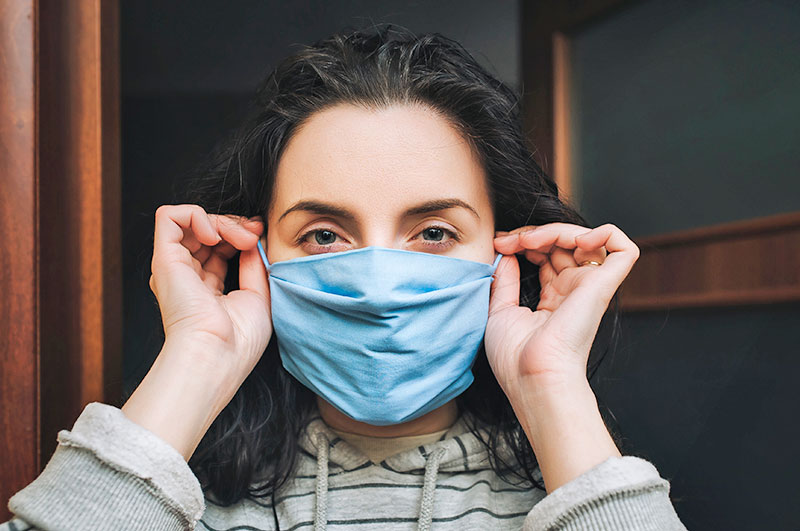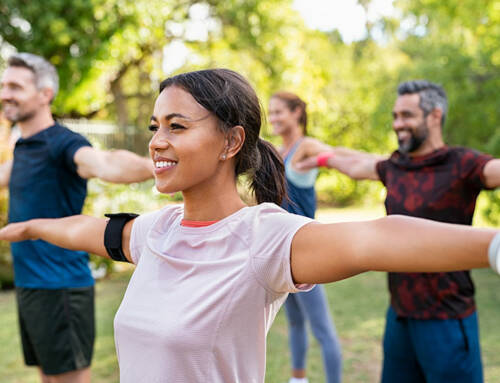Today, I want to share some thoughts and advice around wearing masks and the anxiety that can come with it. As more cities and states have moved to mandatory mask-wearing policies, we’re hearing from people about their experiences of masks causing anxiety. This can include creating full-blown panic attacks whenever a person puts on a mask to comply with this requirement.
As I begin, I want to recognize that wearing a mask is simply not an option for some of you. Many states have exemptions for mask-wearing, accounting for certain medical conditions, mental health conditions, and occasions where there are communication barriers caused by having a mask on. If that’s you, I want to encourage you to take advantage of that exemption. Know that it’s truly OK.
With that in mind, for those of you who want to work on trying to build some mask-wearing endurance, here are a couple of things that you can do.
Practice Talking Slowly – Talking a little bit slower when you are wearing a mask changes how you breathe. Because you are breathing through the mask, you actually have a different breathing experience, which requires you to talk a little bit differently. This simple change will help you, so practice talking slower and be more aware of your breath even before you put the mask on.
Use a Good Mask – Select a mask that you prefer. Some masks go behind the ears. There’s also a gator-type of cloth that you can wear around your neck, and then you pull it up when needed. You can also explore the many different types of fabrics available. Most likely, you’re not going to find a mask that you absolutely love and can’t wait to put on, but focus on finding the one you are most comfortable with.
Practice Control – Take your mask, and stand in front of a mirror. Stop to recognize that you’re in full control. You get to decide if you’re putting this mask on or taking it off. Take a breath, slow yourself down a little bit, and then notice yourself choosing to put the mask on, and then choosing to take it off. Notice what this experience feels like. Do this over and over again. Sometimes leave the mask on for a little bit longer. This practice can help build up some resiliency for wearing your mask.
Aromatherapy – Using some aromatherapy on the inside of the mask, like a scented oil or a scented spray that you find calming and appealing, can change your mask-wearing experience. It can help you to stay in the moment, and allow you to notice the smell of the aromatherapy rather than the challenge of breathing.
Recognize Your Breath – It’s important that you recognize you actually are breathing, it’s just that you’re breathing a little bit differently when you wear your mask. It’s essential to let this register and let your brain know, “I’m OK, I can still breathe. It just needs to be a little more focused and a little bit slower.” Take this slow and patient with yourself.
Find Your Reason – Think about why you’re doing this; why are you wearing a mask? When I personally get a little bit feisty about wearing a mask (which I certainly do because I don’t really like wearing a mask) I think about the people that I love. I think about who I would be wearing this mask for. Who would I be willing to put a mask on for even if it’s uncomfortable? That works for me.
It might not be enough for some of you, and that’s OK. For some of you, although you really want to wear the mask for the people that you love, you may still be experiencing full-blown panic attacks. That’s not a failure, so there is no shame if that’s you. There are other options as well, such as face shields, that might be a good fit for you.
Remember Our Community – Look around, and see that there are other people wearing masks. When we’re doing something together, and we’re a part of something, we tend to have a little more endurance – a bit more strength and willpower to step in and do hard things.
I know there have been times where I walked into a store wearing a mask, and I looked around to see not everyone wearing a mask, and I was self-conscious. But when I encountered other people that had masks on, and we made eye contact, there was an unspoken language that was shared. “Hey, I see you. We’re in this together.” It just gave me a bit more stamina to wear the mask while I finished doing the shopping I needed to do, and then leave. Today, look around and recognize who else you are in this with.
Experiment – If there’s somebody that you live with, or if you can social distance with somebody who’s a safe person, do some experiments. Go outside for a walk and practice wearing your mask and talking about it with that person. Share your experience. “It’s hot.” “I feel like I can’t breathe.” “Oh, actually I’m doing this!” “I feel like I want to take it off – I’m going to take it off and then I’m going to put it back on.” Having a partner in practicing and normalizing your mask-wearing can also be really helpful.
Allow Yourself to Step Away – If you’re in a space and you’re wearing a mask, but you’re starting to feel your anxiety increase, give yourself permission to leave that environment for at least a short period of time. Step outside if you can, and take the mask off. Let yourself take some breaths, feel yourself calm you down. Remind yourself you’re in control, and why are you doing this. Then, if you want to, you can put the mask back on and go back in and try it again. You might need to leave again, but just let that be okay.
Try Therapy Sessions – The final thing I want you to know is that if you are still having heightened anxiety about wearing a mask, therapy can be helpful. In a therapy session, we can help further assess your unique situation. We can do this by a telehealth so you don’t actually have to come in and wear the mask in session. By evaluating your unique situation, we can help you develop a reasonable plan for you and what you’re trying to accomplish.
If that’s you, please don’t hesitate to reach out to a therapist and get some help, because we’re all in this together. We’re all experiencing it, and it is normal to have some anxiety about wearing a mask.
Be well, be safe, and be patient and kind to yourself.
– Kim Bushman, PhD, LP, Founder and Executive Director






